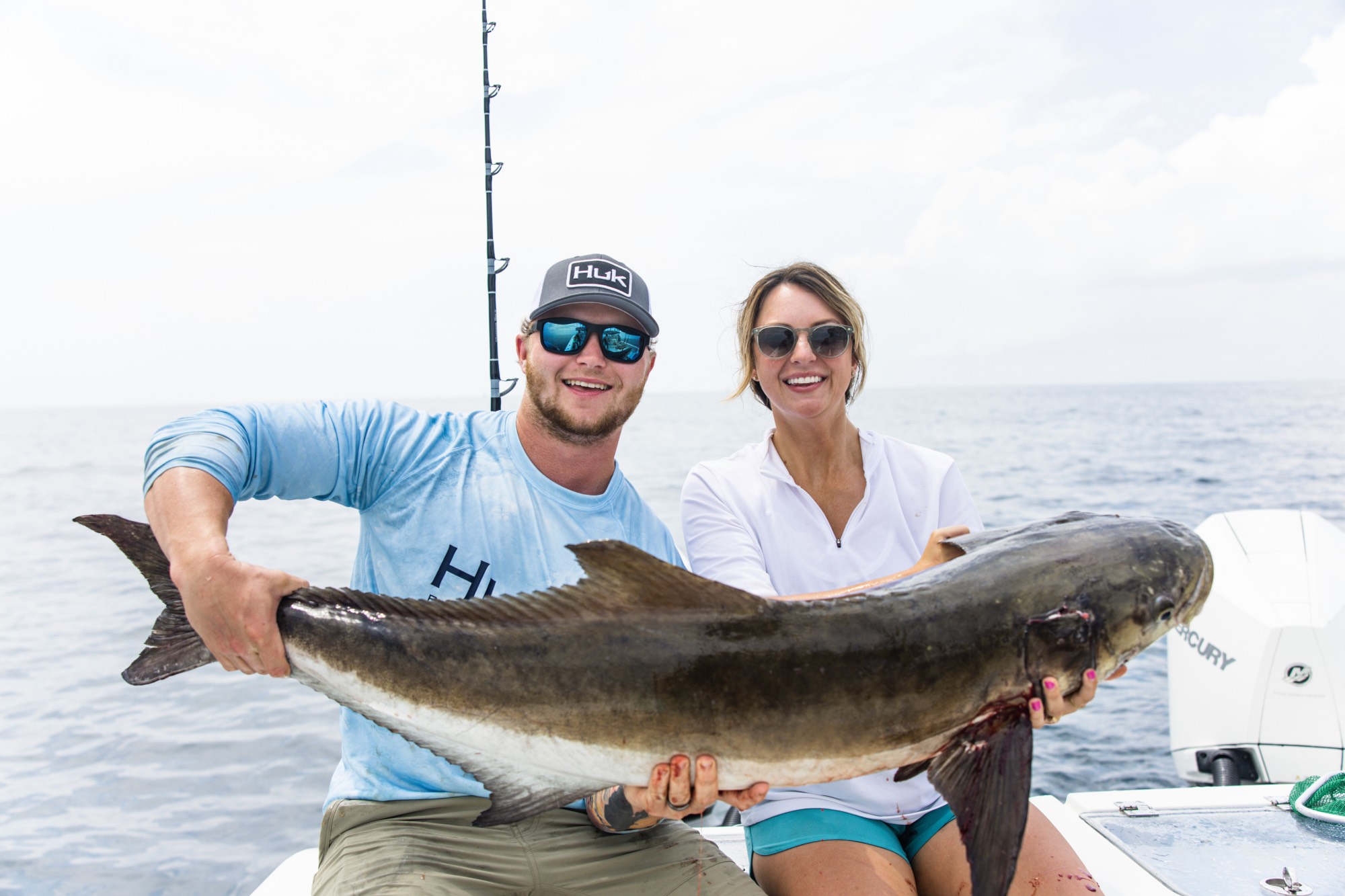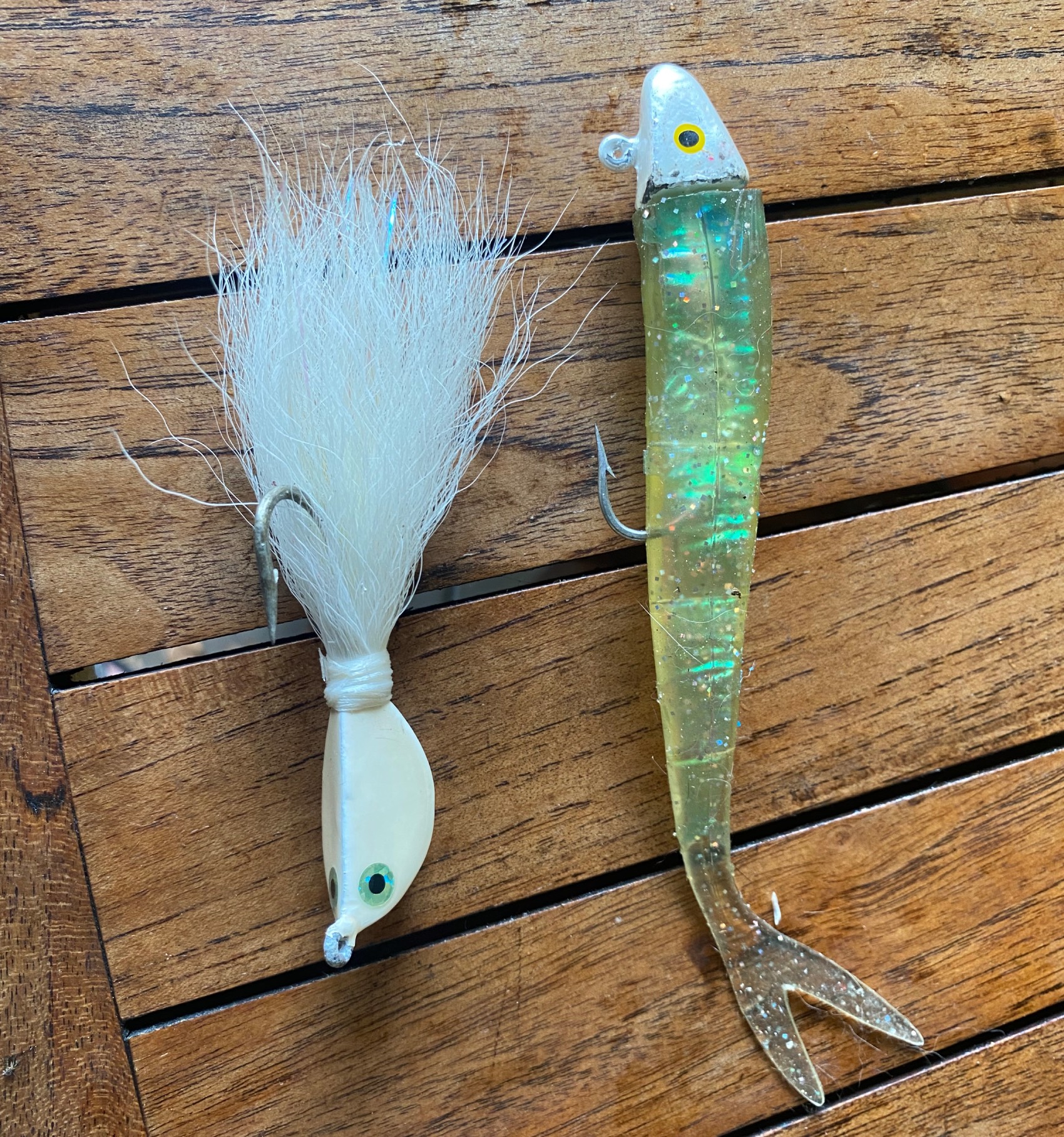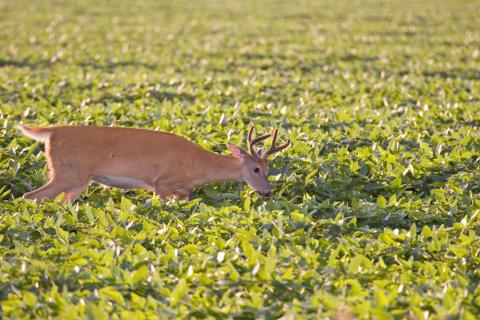Sam White
While they often go by a handful of nicknames across the South—ling, crab-cruncher, lemonfish—cobia are undoubtedly a favorite for anglers fishing anywhere from the flats to the nearshore wrecks and reefs from northern Virginia to Key West to Texas. They’re hard-fighting, tackle-testing brutes on the rod and also superb on the grill; cobia stocks are also in fine shape and are not considered to be overfished in any way, so that’s also good news.
A Quick "About Cobia"
As the only member of their scientific family and genus, cobia don’t have any close relatives in the marine world, although their blunt-nosed shape and brown coloration often have them mistaken for sharks at a distance in the water, especially through the surface glare. They grow quickly, with females maturing in just three years and males in two. Spawning takes place in coastal bays and estuaries multiple times each year from late summer to early fall in the Southeast and Gulf of Mexico. Cobia can achieve weights of more than 100 pounds, where the giants take on another nickname: brown marlin. And while the IGFA All-Tackle world record fish of 135 pounds, 9 ounces was landed in Shark Bay, Western Australia, on 30-pound-test line in 1985, most of the cobia records come from the United States rather than some far-flung international destination. Familiar names line up with multiple line-class records: Key West, Pensacola Beach, Jacksonville, Marathon, Destin, Orange Beach and Chesapeake Bay.

Mossy Oak's Jessi Cole and Owen Finnan with a cobia off the coast of Venice, Louisiana.
Fish around Rays for Cobia
While intentionally targeting cobia can present a challenge, there are several techniques that can put the odds reliably in your favor. The first, especially for inshore and nearshore anglers, is fishing around rays. Cobia love to follow these large bottomfeeders in hopes of picking up a freebie or two as the ray spooks small crabs and other crustaceans from the bottom. Any time a ray is spotted on the flats or free-swimming along the beach, be sure to give it a careful look. I always keep a medium spinning rod rigged with a white bucktail jig and long curly tail soft plastic like the Hogy Protail just for occasions like this. Even if you don’t spot a trailing cobia, give it a few casts anyway—don’t be surprised to see a big one dart in and inhale the jig.
Using Live Bait for Cobia
Another technique revolves around the proven cobia combo of live bait and structure. These fish absolutely love high-relief bottom so think artificial wrecks and manmade reefs as well as hard natural structure. Productive live bait includes mullet, menhaden and especially pinfish. Some anglers swear by live eels as well but these are usually hard to manage and more trouble than they’re worth—artificial eel soft plastics are a great alternative and allow anglers to work different parts of the structure while allowing a frisky live bait to do its thing on the bottom. Cobia also tend to patrol the perimeter of the reef as well, so don’t feel like you have to be right on top–it’s actually best to sit in the sand upcurrent or slightly off to the side of a wreck when targeting cobia, and you’ll also spend less time fighting other species like amberjack and barracuda that also live in the neighborhood.

Proven cobia lures: a white bucktail and a soft plastic jig.
Fishing Around Buoys
A third productive cobia-catching strategy is to run-and-gun a line of buoys, such as those that mark an inlet or other type of deepwater channel from inshore to offshore. Think of these as a type of vertical structure that goes all the way to the surface: cobia can be found anywhere from the shade of the buoy at the surface to midwater along the barnacle-encrusted chain to the bottom, where the buoy’s anchor often sits amid a pile of rubble. Using the aforementioned soft plastic eel imitations, bucktail-and-jig combos or live bait, anglers can pull up to a buoy, fire off a half-dozen casts—being sure to work the entire water column from top to bottom—then head for the next buoy in short order. Find the depth that’s holding fish and you can often catch multiple cobia on one.
Wild Card Scenarios and Avoiding Sharks
There are a few wild-card scenarios that can also produce fish. A decade ago, fishing around the shrimp boats in the Florida Keys and Gulf of Mexico was almost a sure-fire thing—find a shrimper culling his catch first thing in the morning, trade a 12-pack of beer for a basket of cull for chum and bait, and it was game on for the next few hours with cobia, blackfin tuna and other gamefish. These days though, the ever-present shark population has really put a damper on that style of fishing. It’s nearly impossible to get through the sharks, or to get a fish to the boat in one piece. Even more of a unicorn encounter is locating a whale shark on the surface. These gentle giants often have a dozen or more big cobia in attendance but finding one is rare. Still, both are worth mentioning.
As with any other potential chance encounter, it pays to be rigged and ready for cobia. If there’s even a chance of seeing one, I always have a medium spinning rod with a castable jig or bucktail and another ready with a three-foot length of 30-pound-test fluorocarbon leader and a snelled circle hook, ready to pin on a live bait and make a cast in just a few seconds. In the time it takes to find a lure or hook and tie it on, a fleeting opportunity might be lost. In cobia fishing, good fortune favors the prepared.




























